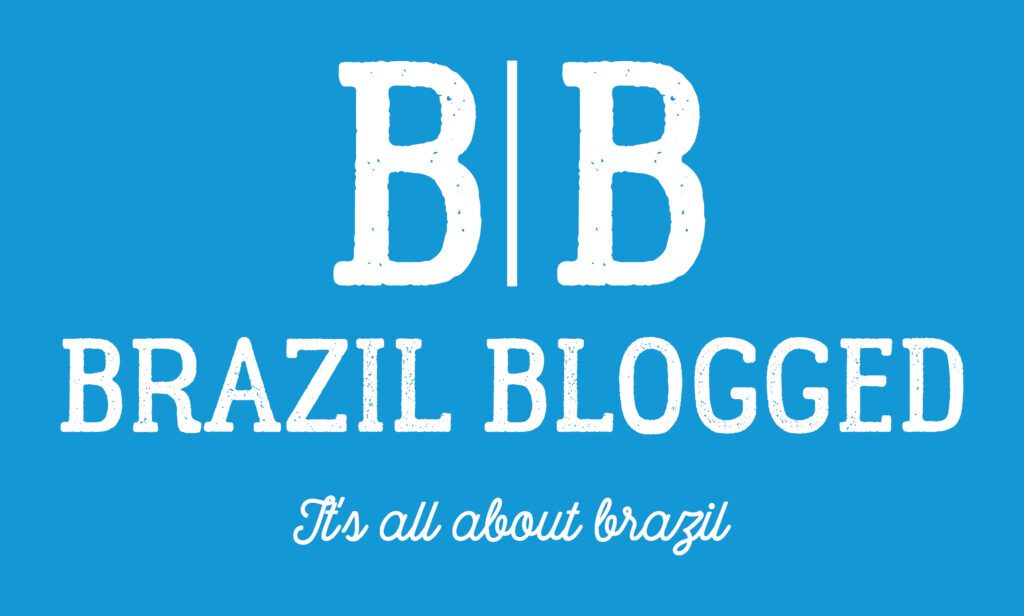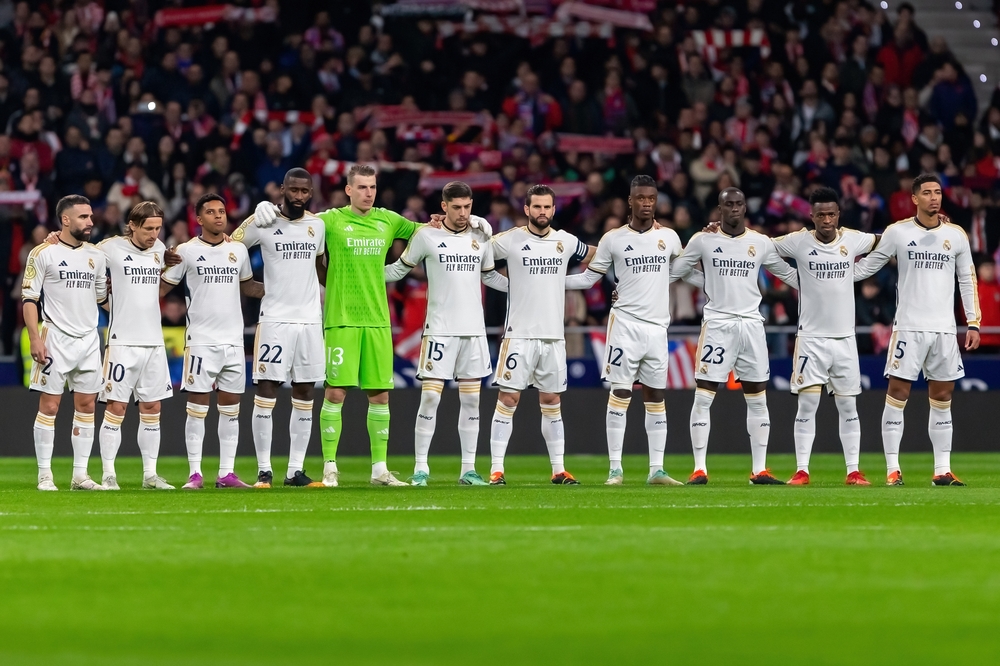Table of Content
ToggleIntroduction
Brazil’s dictatorship era, which spanned several tumultuous decades, remains a pivotal epoch in the country’s history. This period, which began with the 1964 military coup, saw Brazil under an authoritarian regime that lasted until 1985. Marked by the suppression of civil liberties, censorship of the media, and political repression, the military dictatorship in Brazil conducted its governance with an iron fist, all against the backdrop of the Cold War.
The regime’s strict economic and political policies profoundly reshaped Brazilian society. In what became known as the “Years of Lead,” the military government implemented strategies that drove economic growth while also perpetuating human rights abuses. Resistance and opposition movements emerged as the conflict between state power and public freedom intensified. The transition to democracy that followed would gradually open the door to a new chapter in Brazil’s national narrative, though the shadows of the past continued to loom large.
Key Takeaways
- Brazil’s military dictatorship was characterized by severe political repression during the Cold War.
- Economic policies during the dictatorship spurred growth amidst significant human rights violations.
- The transition from authoritarian rule has shaped Brazil’s modern political and social landscape.
Historical Context
In the tumultuous landscape of 20th-century Brazil, the era of dictatorship is a period of significant political transformation. The pre-dictatorship political climate set the stage for a dramatic shift in power, which culminated in the 1964 military coup that forever changed the country’s trajectory.
Pre-Dictatorship Political Climate
Before the advent of the dictatorship, Brazil’s political scene was characterized by instability and rapid succession of presidents. João Goulart, who leaned towards a leftist, labor-friendly platform, rose to Brazil’s presidency amid this volatility. His contentious policies, including land reform and educational initiatives, polarized the nation, especially amidst the backdrop of the Cold War. The United States Government, concerned about the spread of Communism in Latin America, watched Brazil’s political developments with keen interest, and this external factor played a role in shaping the political landscape.
The 1964 Military Coup
The drama reached its apex on April 1, 1964, when a military coup overthrew João Goulart. Behind this action stood a coalition of civil-military groups, some with evident support from the United States Government, who were anxious about Goulart’s purported leftist leanings. The new regime aimed to purge Brazil of its communist threats and stabilize the economy, but at the cost of civil liberties and political freedom. Jânio Quadros, who had preceded Goulart and was known for his eccentric leadership style, had contributed to the uncertainty with his abrupt resignation in 1961. The coup established a new political era in Brazil, one that would be marked by repression, censorship, and a long-lasting impact on the country’s governance.
Years of Lead
The “Years of Lead” refers to a period of intense repression during Brazil’s military dictatorship, defined by widespread censorship, torture, and human rights abuses. It saw the implementation of AI-5, the Institutional Act Number Five, which granted the military regime unprecedented powers.
Repression and Censorship
During the Anos de Chumbo, or “Years of Lead”, the military regime in Brazil exercised strict control over information and cultural expression. Following the decree of AI-5 in 1968, the government had the authority to censor the media, music, literature, and the arts. They justified these measures by claiming the need to protect national security and maintain order. This act signified the start of the regime’s most repressive phase, during which all forms of dissent were suppressed.
Torture and Human Rights Abuses
The military regime in Brazil, from 1964 to 1985, was notorious for its human rights abuses, particularly the systematic use of torture against political prisoners. Deploying brutal techniques ranging from electric shocks to psychological torture, the government aimed to extract information and stifle opposition. These human rights abuses were widespread, and many victims were never seen again. The atrocities committed during this era left a lasting scar on Brazil’s societal fabric.
Economic Policies and Impact
Brazil’s economic trajectory has been notably influenced by distinct policies during the dictatorship era, which led to remarkable industrial growth as well as daunting financial crises. The two most prominent economic phases of this period, which left a deep imprint on the country’s history, were the “Brazilian Miracle” and the subsequent debt crisis coupled with rampant inflation.
Brazilian Miracle
During the late 1960s and early 1970s, Brazil experienced a phase of extraordinary economic growth, often referred to as the Brazilian Miracle. This period was characterized by aggressive state-led industrialization policies and a significant influx of foreign investment which propelled the economy to new heights. The ambitious economic plan, especially during President Kubitschek’s tenure, prioritized infrastructural development and forefronted the establishment of heavy industries. Annual GDP growth rates soared to an average of about 10%, painting a picture of an economic juggernautwithin Latin America.
Debt Crisis and Inflation
However, the Brazilian Miracle could not sustain itself indefinitely. In the late 1970s and early 1980s, Brazil was afflicted by a severe debt crisis. The country’s borrowing had ballooned, financing short-term growth without adequate consideration for long-term sustainability. As global interest rates spiked, the country’s debt service obligations became untenable, leading to economic turmoil and inflation reaching unprecedented levels. Economic mismanagement during this period also exacerbated the inflationary pressures, leading to a loss of consumer purchasing power and challenging the societal notion that industrial growth could be maintained indefinitely.
Resistance and Opposition
In the face of harsh political repression during Brazil’s dictatorship era (1964-1985), resistance materialized in various forms. There were those who chose the path of armed struggle, while others engaged in political dissidence—a testament to the multifaceted nature of opposition against an authoritarian regime.
Armed Struggle
Armed resistance in Brazil was a significant aspect of the opposition to military rule. Leftist groups, including several Marxist organizations, opted for guerrilla tactics believing direct action was necessary to challenge the regime. A notable figure in this form of struggle was Carlos Marighella, whose Marxist orientation led him to organize the Ação Libertadora Nacional (ALN). Even though this insurgent method aimed to catalyze a wider movement against the dictatorship, the state’s heavy-handed response led to the capture and elimination of many guerrilla members.
Political Dissidence
Not all opposition to Brazil’s military dictatorship took the form of armed struggle. In fact, a varied political dissidence movement, embodied by political parties and mass mobilizations, emerged with the goal of restoring direct elections and fostering democratic governance. The Diretas Já movement in the early 1980s was a driving force in this nonviolent campaign, uniting diverse sectors of society with the cry for “direct elections now!” This period marked a significant escalation in organized political activity, leading to an eventual transition to civilian rule. Political parties, previously under tight control or driven underground, began pushing vigorously within the legal boundaries set by the regime, aiming to widen the scope of permitted political expression and participation.
Transition to Democracy
In the late 20th century, Brazil witnessed significant shifts as it moved from a period of military dictatorship towards a participatory democracy. This transition involved crucial legislative changes and a gradual political opening, ultimately leading to direct elections and the restoration of civilian rule.
Amnesty and Political Opening
The process began with the Amnesty Law, enacted in 1979, which allowed political dissidents to return from exile and released political prisoners. This integral first step created the foundation for broader political participation. The subsequent period, known as ‘abertura’ (political opening), was characterized by incremental reforms aiming to liberalize the regime from within.
Direct Elections and Civilian Rule
It wasn’t until the mid-1980s that the call for Direct Elections intensified. Activists clamored for ‘Diretas Já’ (Direct Elections Now), a movement pressing for immediate restoration of direct presidential elections. Progressively, this mounting public pressure combined with political negotiations led to substantial changes.
A pivotal moment was the election of Tancredo Neves, the opposition candidate in the indirect presidential election of 1985, signaling a decisive shift toward Civilian Rule. Although Neves fell ill and passed away before taking office, his election was a symbolic victory for democracy. The culmination of these efforts resulted in the drafting of a New Constitution in 1988, which firmly established democratic institutions and civil liberties.
Through these deliberate steps, Brazil managed a relatively peaceful transition from an authoritarian regime to a democratic government, shaping the political landscape for future generations.
Cultural and Social Impact
The dictatorship era in Brazil dramatically reshaped the nation’s cultural landscape, marking a period where artistic expression came under severe repression that led to the exile of prominent musicians and artists, while Brazilian society experienced profound shifts under censorship.
Exile of Musicians and Artists
During the dictatorship, artists and musicians faced heavy censorship, and many were forced into exile. Figures like Gilberto Gil and Caetano Veloso, significant proponents of the Tropicália movement, were arrested in 1969 and subsequently lived in exile in the UK. Their absence from Brazil not only hindered the cultural progression but also sent a chilling message to other artists about the regime’s intolerance towards creative freedom.
- Gilberto Gil – Arrest in 1968; Exile in UK from 1969 to 1972
- Caetano Veloso – Arrest in 1968; Exile in UK from 1969 to 1972
Chico Buarque, another prominent musician, used metaphor and irony to bypass censorship and eventually went into self-imposed exile in Italy in 1969. He continued to produce music that subtly criticized the political situation in his homeland, although always under the risk of misinterpretation and subsequent censorship upon his work’s return to Brazil.
Impact on Brazilian Society
The dictatorship’s censorship and political repression extended deeply into Brazilian society. Measures included government control over media outlets, music, film, and literature, effectively policing the boundaries of social and political discourse. Brazilians were encouraged to report subversive activities, leading to an atmosphere of mistrust and fear, contrasting starkly with the nation’s previous image of a vibrant and free-spirited society.
- Censorship’s effect on media:
- Music: Heavy scrutiny and banning of songs not aligned with government views.
- Movies and Literature: Content alteration or complete ban of items deemed subversive.
These actions suppressed the cultural dynamism for which Brazil had been known, replacing it with a more constrained and regulated cultural environment, although resistance to this suppression persisted, shaping the resilience and continuity of Brazil’s diverse cultural expressions.
Legal and Judicial Actions
During the dictatorship era in Brazil, the judiciary played a complex role, at times being complicit with the regime’s abuses, and at others providing a venue for resistance. Post-dictatorship, the country has grappled with these legacies through various legal mechanisms.
Truth Commissions
The establishment of the National Truth Commission (Comissão Nacional da Verdade) was a pivotal step in confronting the past. Initiated in 2012, the commission aimed to investigate human rights violations that occurred between 1946 and 1988, focusing on the period of the dictatorship. Its mandate included the clarification of cases of torture, killings, and forced disappearances. The commission’s findings were critical in acknowledging state responsibility and framing the narrative for subsequent judicial actions.
Human Rights Trials
In the quest for justice, Brazil faced significant challenges due to the amnesty law that shielded military officials from prosecution. Nevertheless, efforts persisted, with cases often brought to the Inter-American Court of Human Rights. The Court condemned Brazil for failing to investigate and punish crimes committed during the dictatorship, pushing the country to tackle impunity. The pressures from international courts have had a tangible effect, reviving the debate on accountability and compelling domestic courts to reconsider the boundaries of justice in light of past abuses.
Past and Present: Comparisons
The Brazilian political landscape has been profoundly shaped by its history with military rule, and comparisons between past and present reveal the enduring influence of this era. Present dynamics reflect both continuities and departures from the previous authoritarian regime.
Military Influence in Modern Brazil
Under the presidency of Jair Bolsonaro, a former army captain, the military’s presence in civilian government has increased. The administration has appointed several military personnel to key positions within the government, a change from previous administrations. This trend draws parallels with the Military Dictatorship in Brazil (1964-1985), where the military had direct control over the state apparatus. However, today’s involvement, while significant, is within the realm of a democratic framework, unlike the coercive rule of the dictatorship era.
Legacy of the Dictatorship
Democracy in Brazil has been restored since 1985, yet the legacy of the Authoritarian Regime continues to influence current political discourse and policies. Initiatives like the Truth Commission’s evaluations assess the impacts of past atrocities, impacting the social representations of history in Brazil Psychosocial effects of the Truth Commission’s evaluations. The Presidential Election periods often stir debates about the military regime, as candidates and citizens alike reflect on the country’s journey from a period of repression to one of Democracy. It highlights both the progress made and the challenges that remain in reconciling the nation’s past with its present.
International Context
The Dictatorship era in Brazil did not unfold in isolation but rather as a part of the broader geopolitics of the time, primarily driven by the Cold War tensions. The United States’ role and the regional interplay within Latin America were significant in shaping Brazil’s political landscape during this period.
US-Brazil Relations
During the Brazilian dictatorship, which began in 1964 and lasted until 1985, the United States maintained a complex relationship with Brazil. The US, under various administrations, initially supported the military regime as a buffer against communism in Latin America. This stance was part of a larger strategy to contain the spread of communism, a key element of the Cold War. Notably, figures like Henry Kissinger influenced foreign policy, which often translated into backing anti-communist regimes, irrespective of their human rights records.
On the economic front, the relationship saw significant cooperation with Brazil receiving financial and military assistance from the United States. This support was strategic, maintaining influence in the region, and also economic, as American businesses had substantial investments in the country.
Latin America During the Cold War
The broader context of Latin America during the Cold War was marked by heavy US influence and interventions. Many Latin American countries experienced military coups, which were often backed by the United States as part of its policy to prevent the possible rise of left-leaning governments. The period was riddled with regional tensions and ideological battles that placed military regimes, dictatorships, and US-supported administrations against socialist movements and insurgencies.
Brazil’s interaction with its neighbors was also influenced by the dynamics of the Cold War, with a shared experience among several Latin American nations of political repression and economic hardship. Despite the regional similarities, Brazil’s dictatorship carved its own path, not least due to its size and economic importance on the continent.
Reflections in Literature and History
The era of dictatorship in Brazil has left an indelible mark on its literary and historical landscape. Through rigorous scholarship and creative expression, the period continues to be explored, providing insight into the complex interplay of repression, resistance, and memory.
Historiography of the Dictatorship
Historians such as Rodrigo Patto Sá Motta have dedicated substantial efforts to dissecting the mechanics of the Brazilian Armed Forces during the dictatorship period. Their work sheds light on the intricate ways in which censorship was used as a tool for political and ideological suppression. The scholarship reveals not only the direct impact of censorship on dissenting voices but also the broader implications for the nation’s collective memory.
Literary Representations
Brazilian literature has chronicled the emotional and social fallout of the dictatorship through a diverse array of narratives. These pieces serve as both a reflection and a testament to the resilience of the human spirit in the face of authoritarianism. Literature during and following the dictatorship navigates personal and collective experiences, capturing the tension between silence and the yearning for freedom.
Notable Figures
During the dictatorship era in Brazil, various individuals stood out for their roles in shaping the country’s political landscape. This section will focus on notable military and civic leaders who played significant parts in Brazil’s history during this tumultuous period.
Military Leaders
- Artur da Costa e Silva (1967-1969): As the second president of Brazil’s military regime, he was known for institutionalizing the repressive tactics of his government through the Ao-5 decree, which gave him unbridled powers.
- Ernesto Geisel (1974-1979): Geisel’s presidency was marked by a push toward political relaxation, a process referred to as “distensão,” gradually leading Brazil away from the strict military rule towards a more open society.
Civic and Political Leaders
- João Figueiredo (1979-1985): Succeeded Geisel and continued the policy of gradual political opening. He was the last military president and oversaw the transition to civilian rule.
- Dilma Rousseff: A significant political figure who, during the dictatorship, was part of the left-wing resistance. Later, she became Brazil’s first female president. Her past as a resistance fighter is a testament to the civic leadership that emerged in reaction to military rule.
- Getúlio Vargas: Although not directly related to the military dictatorship era (1964-1985), his earlier dictatorial presidency through the Estado Novo (1937-1945) set a precedent for authoritarian rule in Brazil.
Frequently Asked Questions
This section answers common inquiries related to the significant events, key figures, political changes, conclusion, human rights impacts, and economic aftermath of the military dictatorship era in Brazil.
What events marked the beginning of the military dictatorship era in Brazil?
The military dictatorship era in Brazil began with a coup d’état on April 1, 1964, which overthrew President João Goulart. The coup was a culmination of a series of political crises and was widely supported by various sectors of society, including conservative political groups and the military.
Who were the key figures in power during Brazil’s dictatorship period?
Key figures during the dictatorship period included military leaders who ruled as presidents, such as Marshal Humberto de Alencar Castelo Branco and General Emílio Garrastazu Médici. These leaders were pivotal in shaping the government’s authoritarian policies.
What were the main political changes in Brazil during the 1960s dictatorship?
During the 1960s, Brazil experienced a suspension of democratic institutions and civil liberties. The government also imposed Institutional Acts which significantly expanded executive power, allowing for political purges and further consolidation of the military’s control over the state.
How did the military dictatorship in Brazil come to an end?
The military dictatorship in Brazil came to an end through a gradual process called distensão, led by Presidents Ernesto Geisel and João Figueiredo. This started in the late 1970s and culminated in the return to civilian rule with the election of President Tancredo Neves in 1985.
What were the human rights impacts of Brazil’s military rule?
Brazil’s military rule was marked by widespread human rights abuses, including censorship, torture, and forced disappearances. The period is notorious for its repression of dissent and targeting of political opponents.
How did the Brazilian dictatorship era affect the country’s economic development?
The Brazilian dictatorship era led to an initial period of economic growth known as the “Brazilian Miracle,” but this was followed by severe economic issues, including debt crises and rampant inflation, which later necessitated extensive reform.












